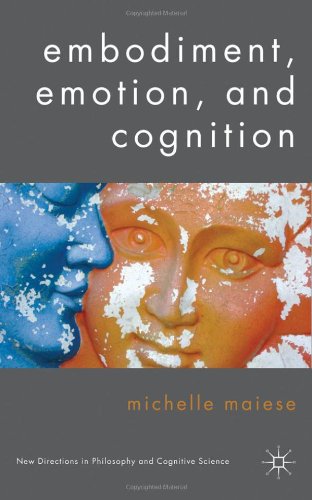

Most ebook files are in PDF format, so you can easily read them using various software such as Foxit Reader or directly on the Google Chrome browser.
Some ebook files are released by publishers in other formats such as .awz, .mobi, .epub, .fb2, etc. You may need to install specific software to read these formats on mobile/PC, such as Calibre.
Please read the tutorial at this link: https://ebookbell.com/faq
We offer FREE conversion to the popular formats you request; however, this may take some time. Therefore, right after payment, please email us, and we will try to provide the service as quickly as possible.
For some exceptional file formats or broken links (if any), please refrain from opening any disputes. Instead, email us first, and we will try to assist within a maximum of 6 hours.
EbookBell Team

4.4
72 reviews
ISBN 10: 0230576974
ISBN 13: 9780230576971
Author: Michelle Maiese
Beginning with the view that human consciousness is essentially embodied and that the way we consciously experience the world is structured by our bodily dynamics and surroundings, the book argues that emotions are a fundamental manifestation of our embodiment, and play a crucial role in self-consciousness, moral evaluation, and social cognition.
1 The Essential Embodiment Thesis
1.0 Introduction
1.1 Consciousness In and Through the Body: Sensorimotor Subjectivity
1.2 Five Intrinsic Structures of Sensorimotor Subjectivity
1.3 Life as the Foundation for Sensorimotor Subjectivity
1.4 Essentially Embodied Emotions
1.5 Conclusion
2 Essentially Embodied, Desire-Based Emotions
2.0 Introduction
2.1 Cognitive Theories of Emotion
2.2 Desire-Based Emotions
2.3 Emotional Intentionality
2.4 Affective Framing
3 Sense of Self, Embodiment, and Desire-Based Emotions
3.0 Introduction
3.1 Unified Consciousness and the Sense of Self
3.2 Immanent Reflexivity
3.3 A Necessarily and Completely Neurobiologically Embodied, Egocentric Point of View
3.4 Embodied Agency and Desire-Based Emotions
3.5 What Does It Mean to Be an Essentially Embodied Self?
4 The Role of Emotion in Decision and Moral Evaluation
4.0 Introduction: Egocentric, Caring-Contoured Maps
4.1 The ‘High-Reason’ View of Decision-Making and Moral Evaluation
4.2 The Crucial Role of Emotion and Affect
4.3 The Frame Problem
4.4 Conclusion
5 Essentially Embodied, Emotive, Enactive Social Cognition
5.0 Introduction
5.1 Concerns about Theory-Theory and Simulation-Theory
5.2 Rethinking Social Cognition: ‘Primary Intersubjectivity’ and Affective Framing
5.3 Context, Social Roles, and Participatory Sense-Making
5.4 Conclusion
6 Breakdowns in Embodied Emotive Cognition
6.0 Introduction
6.1 Schizophrenia
6.2 Psychopathy
6.3 Autism
6.4 Conclusion
embodiment emotion and cognition
embodied cognition scholarly articles
5 elements of cognition
4e cognition
4e cognition wikipedia
4e cognition model
Tags: Michelle Maiese, Embodiment, Emotion